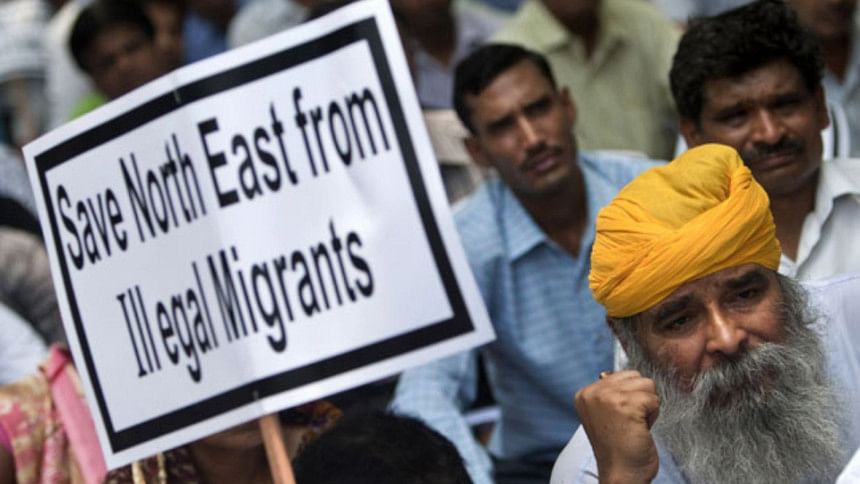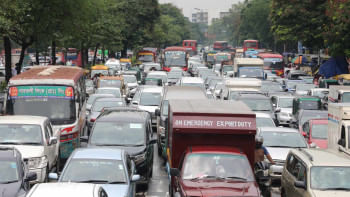The bogey of 'illegal migration'

Predictably the issue of 'illegal migration' had featured most predominantly in the latest state elections in Assam. For the BJP this has been a hobbyhorse, used conveniently to seek votes during elections. That this would be used as the main electoral issue in the Northeast, particularly in Assam elections, was predictable and the vigour with which it was pursued unsurprising. During the state election campaign, the BJP president Amit Shah had 'promised to stop illegal infiltration once and for all if the party is voted to power' by sealing the porous border.
However, allegations of 'illegal migration / infiltration' from Bangladesh are not new. A few decades ago we had heard the BJP leaders' outlandish figure of twenty million illegal Bangladeshis in India although one was not sure what method was used to arrive at that number. And even if such figures are not mentioned these days, the issue has been exploited to draw votes nonetheless. BJP leaders are on record saying during the run up to the Indian elections of 2014 that all 'illegal Bangladeshis' would be sent home packing once their party was elected to power. We are not aware how many, if any at all, 'illegal' Bangladeshi have been traced out and sent back in the two years that the BJP has been in power.
One is a bit confused here by the use of certain words by Indian politicians, ex-diplomats and the media to describe movement of people across the border. Both the words 'illegal migration' and 'infiltration' are being used in this context. There is substantive difference between the two and the Indians must decide which is which. If it is 'infiltration' India would want us believe it to be, then it cannot be in thousands since the word implies surreptitious movement in ones and twos across recognised borders. They couldn't, as Amit Shah avers, have entered the state in lakhs in this manner. And if indeed there was 'migration' - implicit in the word is the number of people involved - one wonders how, with nearly 80 percent of the borders along Bangladesh and the State of Assam's border fenced, such large scale movements were at all possible. And how is it possible, as Shah accuses, for the migrants to have, "snatched away jobs and resources of local youths"? It is as if a Bangladeshi has to just cross the border to be handed a job before he can say Jack Robinson. And which local will give away the jobs and resources to outsiders? Those who raise the bogey of infiltration/illegal migration from Bangladesh would be well advised to revisit the history of Assam and the development of the demographic pattern in that state over many centuries.
Absence of any reaction to the allegation of 'illegal migration' in any form by our foreign ministry is absolutely correct. However, what is surprising is the comment of our high commissioner in New Delhi that Bangladesh is willing to sit with India to 'resolve' the issue. One wonders whether it was an impromptu statement the ramifications of which had not been fully visualised. His comment is very simplistic and one would benefit from his suggestions for resolving an issue which Bangladesh doesn't recognise in the first place. One wonders too whether our foreign ministry concurs with him, since so long Bangladesh has been very consistent, rightly, in dismissing such allegations. The statement of our high commissioner assumes greater significance when juxtaposed with the comment of a former Indian high commissioner to Dhaka, in the same context, that Dhaka should accept this as fact. Would it be remiss to think that our high commissioner's expressed willingness to sit with India to resolve the matter is in effect acknowledging that 'illegal migration' is indeed an issue? And why should Bangladesh have to shoulder the responsibility for a phenomenon whose occurrence predates 1947 and 1971? Moreover, the validity of the term "illegal migration" is contested by some on the grounds that since there is no regime of legal migration between the two countries, the question of illegality is a misnomer.
The reality is that there is cross border movement of people, because of the very nature of the border areas and the way the border was drawn. In reality, movements across borders are a seasonal phenomenon, and during lean periods between 5000 and 7000 people go to India to work in the fields. On the other hand there are, reportedly, half a million Indians in Bangladesh and no one knows how many of them have work permits. The compulsions for crossing are many and cross border movements are not from one direction only.
The writer is Associate Editor, The Daily Star.

 For all latest news, follow The Daily Star's Google News channel.
For all latest news, follow The Daily Star's Google News channel. 







Comments